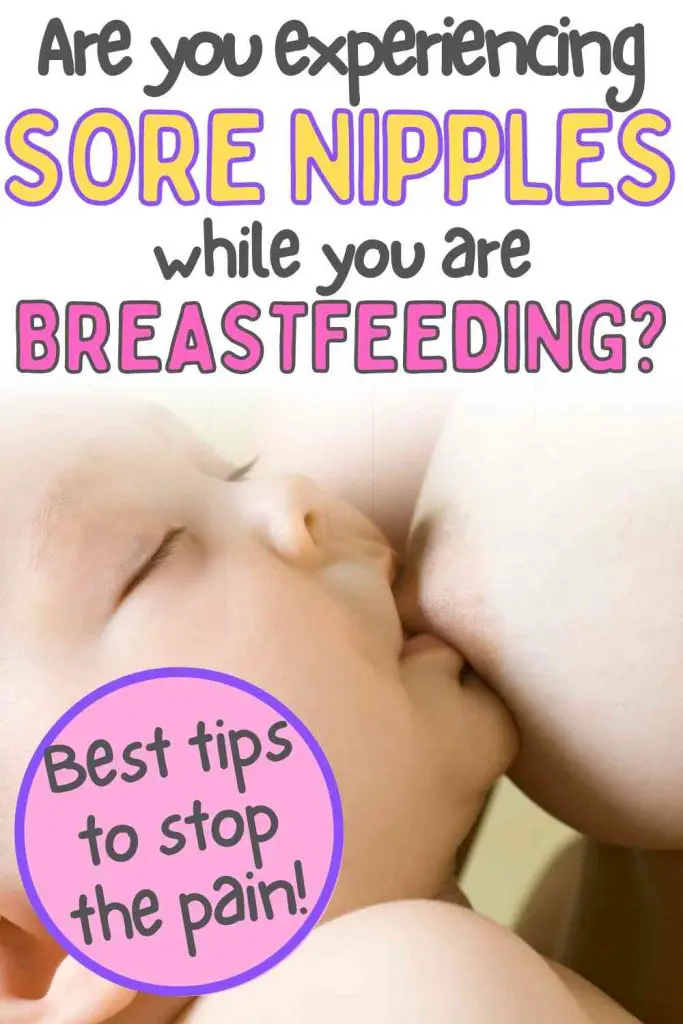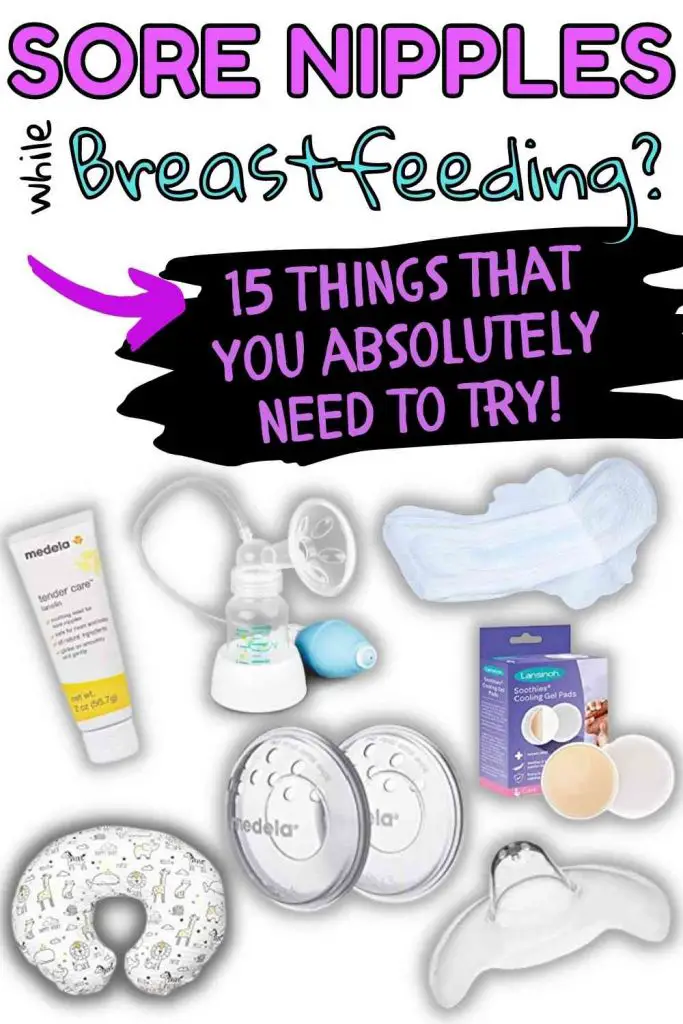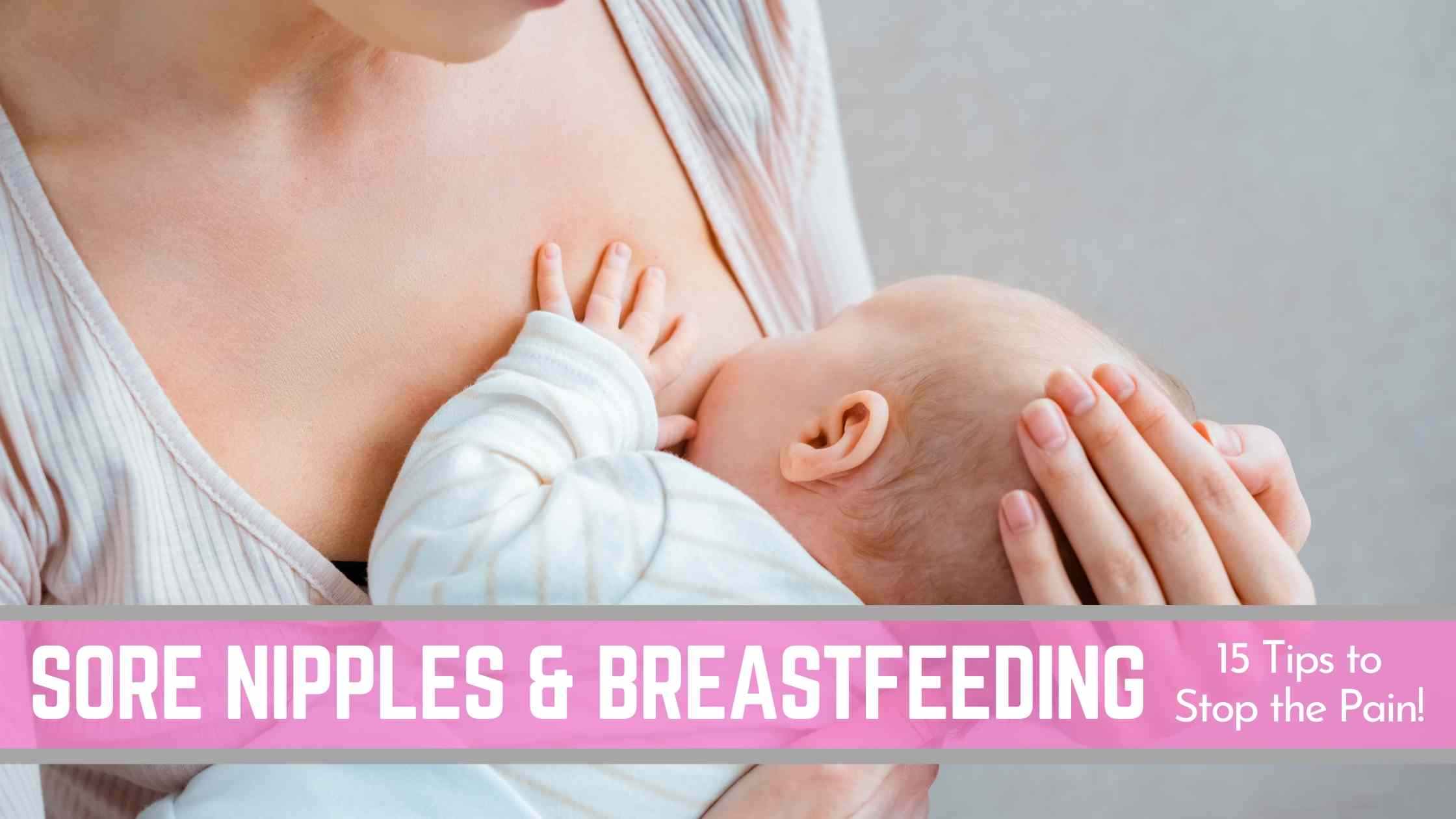Oh breastfeeding … I had this dream of being able to breastfeed my daughter and how it would just come naturally and it would be an amazing bonding experience. How naïve I was!
I mean, I had read about the breastfeeding position and the correct latching, and I though I was so ready. But nothing could have prepared me for the reality of it.
After I gave birth to my daughter and I started breastfeeding, I was in excruciating pain with my nipples from the very beginning. Even the very first feed as I was getting my stitches after delivery was so sore – and I am not talking about the pain of getting the stitches done.
It took me about 6 weeks of trying different things while being unable to sleep from the throbbing pain in my nipples, seeing a lactation consultant and endless crying while holding my baby in my arms before I finally managed to get the pain under control and enjoyed the breastfeeding experience I had always dreamed of. You might also find it useful to read out guide to help you set out a schedule for feeding and take a look our view of the best breast pumps.
I find while we are pregnant, so much of the focus is on labor and delivery. Most of us enrolled in a birthing class and got some tips for that, and maybe some tips on how to survive the first weeks with a newborn. But such little attention goes into preparing women for breastfeeding: it shouldn’t be just about the breastfeeding techniques, but also the troubleshooting and how/where to ask for help if it gets too hard. Instead, there’s just this constant pressure that “breast is best” and gosh will I feel like such a failure if I don’t succeed…
Going back, if I had known everything that’s written below before I even started breastfeeding, things could have gone so different. I feel like I was lucky in the end, because I managed to breastfeed my daughter successfully until she was 18 months, but it could have as easily gone in the other direction.
So, I have decided to collect here all the best tips I got to stop sore nipples while breastfeeding to help any other mom going through a similar experience! These tips truly saved me and made my breastfeeding journey a success in the end, so I am confident they can make a difference in yours as well.
Related: How to Survive the First 3 Months with a Newborn
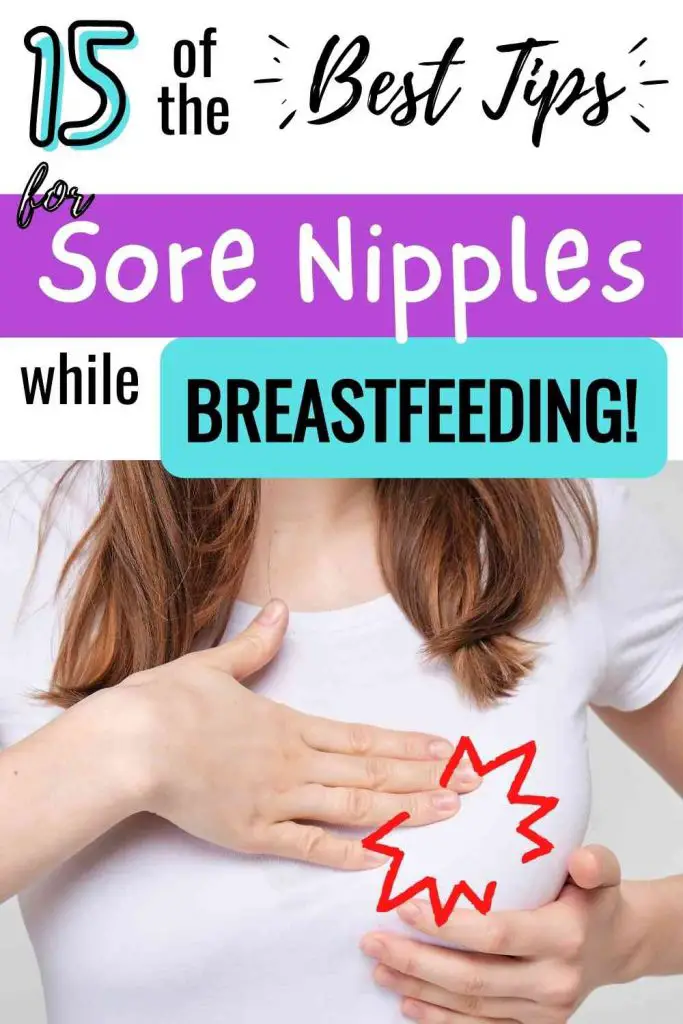
13 Tips for Sore Nipples while Breastfeeding
1) Change Position
Breastfeeding your baby in a position that doesn’t allow your baby to latch properly is usually the main reason why you may be experiencing sore nipples (and may end up with a colicky baby). In fact, if baby is only sucking on the nipple instead of the whole areola, this will cause cracked nipples and can contribute to your baby not being able to feed properly, meaning they will just want to feed more making the situation even worse.
I was so surprised to find out that there are so many different breastfeeding positions that you can try, other than the classic cradle hold position. My midwife showed my a couple of different ones and then my lactation consultant introduced me to the “reclined” or “natural” breastfeeding position that changed everything for me.
The thing is that no one position is better than the others. It really depends on what feels comfortable for you and your baby. It also depends on your breasts and your letdown: some positions are best if you have bigger breasts or a forceful letdown. So, I would highly recommend you try a few different positions first and see if any one of them feels more comfortable and (hopefully) less painful than the others, and if baby seems to be latching and feeding better and more easily.
Note that if your nipples are already very sore, no matter what position you try it’s still going to hurt! It will take a while and a combination of the tips below for your nipples to stop hurting once you find the position that works for you. But still have a go and see what feels comfortable and what doesn’t and how your baby reacts to the changes.
You can also try a Breastfeeding / Nursing Pillow to help you in holding baby while breastfeeding. This is also a great postpartum essential if you had a c-section, as it can help keep some of the baby pressure off of your tender belly, or you can also wrap it around your tummy for extra support when you need to sneeze or cough.
You can get a FREE Nursing Pillow at www.nursingpillow.com/ by using the promo code MUMINTHEWOODS.
For more information on all the different breastfeeding positions that you can try, you can have a look at these useful article here, or there is a great Breastfeeding Essential Course from the Breastfeeding Mama that goes very well through a variety breastfeeding positions, including very useful videos.
If you are interested in trying the reclined feeding position, here’s the link to some videos that my lactation consultant sent me to watch and familiarize myself with. This is actually a recommended position to try if you had a colic baby, as it helps slow down the milk flow.
Related:
- 20+ Best Online Breastfeeding Courses (FREE Classes too!)
- Colic Symptoms & Remedies for Breastfed Babies
2) Make Sure you Get a Good Latch
You can’t achieve a good latch without holding your baby in the correct position, but having your baby in a good position doesn’t necessarily mean your baby is latching properly. Does it make sense? 🙂
Latching on consists in your baby taking your nipple and areola into their mouth to suckle and is the most crucial aspect of breastfeeding. Like I mentioned above, without a proper latch your nipples can get cracked and contribute to baby not feeding properly. This will initiate a vicious cycle in which your breasts are not stimulated enough to produce more milk and you will experience a drop in milk supply, or you could get an infection that can lead to mastitis.
Some signs of a good latch are:
- The latch is comfortable and pain free
- Your baby’s chin touches your breast
- Your baby’s mouth opens wide around your breast, not just the nipple
- Your baby’s tongue cups under your breast
- You hear or see swallowing
- Your baby’s ears move slightly
You can find more information on how to get a good latch, step-by-step, here. Or watch the video below.
Related: Sudden Drop in Milk Supply (Signs, Causes & How to Fix it!)
3) Try a Nipple Shield
A nipple shield was absolutely the one thing that TOTALLY SAVED ME! It allowed my nipples to take a break and heal, while still being able to breastfeed my daughter, and I don’t know what I could have done without it.
It consists in a flexible silicone nipple that is worn over mom’s nipple during feeding. It helps if you have cracked nipples, but also if you have flat or inverted nipples and your baby is struggling to latch on, as it helps draw the nipple out.
The thing about the nipple shield is that it doesn’t help the nipple heal directly. However, it will protect it from further damage while you keep trying to get a correct breastfeeding position and latching. It’s not a permanent solution, but it will buy you time while your figure it all out, and the goal is to eventually be able to breastfeeding normally without any pain or extra feeding aids.
I started using a nipple shield when my nipples were already so sore – I was desperate! My wife still had one at home from when she was trying to breastfeed our first daughter and I thought there was no harm in giving it a go.
Luckily my baby didn’t mind it at all, and was still quite happy breastfeeding from it. And, at the same time, my nipples could take a break. It was still a bit sore initially, but then gradually got better and better.
I used it a few times, for a few days in a row (taking little breaks in between), as I didn’t want my baby to get too used to it. In fact, one problem about the nipple shield is that you need to be careful that your baby doesn’t become too dependent on it. Otherwise it might become difficult to wean them off it.
You also need to be careful your baby is still managing to draw enough milk out and have a good feed. You can find some tips on what to look out for to make sure baby is still feeding enough and how to wean off the nipple shield here.
I personally used the Medela Nipple Shield and was so happy with it. You only really need one, but I would recommend getting at least two in case you lose one.
4) Use a Nipple Cream
And if I didn’t have a nipple shield in my hands when I was breastfeeding at the beginning … it was a nipple cream!
There are some nipple creams out there that are made especially for breastfeeding moms. They are designed to stop or prevent dry, itchy, cracked and bleeding nipples, and they are also effective at soothing the tender areas.
They are all made from natural ingredients and can be left on while breastfeeding. However, it’s typically recommended to apply nipple creams after a feed, so it has some time to absorb into your skin before the next feed.
There are dozens of nipple creams on the market, however, I would totally recommend the Medela Nipple Cream that I personally used.
5) Apply Breastmilk
Another thing that you can try is to express a few drops of breastmilk and dab them on your nipples. In fact, breastmilk is really a golden liquid as it contains substances that aid healing and fight infection.
I have used it for my nipples when they were cracked, but also for my daughters when they had an eye infection or little cuts.
6) Give Pumping a Go
If you are keen on using a breast pump, then this is another solution you can try to give your nipples a rest from your baby sucking on them.
This wasn’t personally my first choice, as when you are using a breast pump you are also missing out on practicing the latching and breastfeeding positions. Plus you’ll start bottle feeding and, if you are planning on breastfeeding long-term, it wasn’t what I wanted.
So, I only tried this a couple of times, and then only used the breast pump later on when my baby was older. But would totally recommend it if you are planning on pumping, either part-time or full-time eventually. It will give you a chance to start getting used to the machine, and all the storing of the milk, as well as bottle feeding.
One thing to be careful of is the fact that an incorrect breast pump shield fit can also cause nipple pain. If it’s too small or big, or if the breast pump suction is too high, it can also hurt. So, I would highly recommend you enroll in a pumping course to learn how to do it properly.
Related:
– 25 Formula & Bottle Feeding Tips (to Make it Easier!)
– 20+ Best Online Breastfeeding Courses (Pumping and FREE Classes too!)
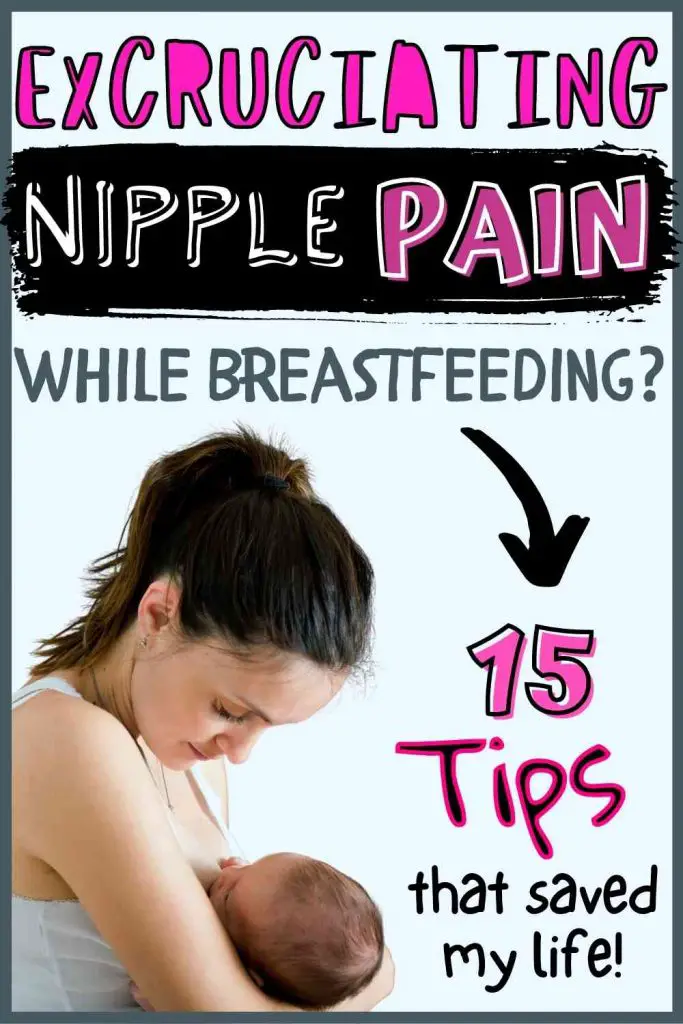
7) Change Breast Pads Frequently
Breast Pads are great for catching all that extra milk that would end up on your top otherwise but make sure you change them frequently, particularly if you have cracked and bleeding nipples. In fact, when breast pads become damp, they create an environment that is favorable for yeast, which can then lead to thrush (a fungal infection).
If you are using reusable breast pads, also make sure that they are nice and dry before putting them back on.
Even if you don’t have cracked or bleeding nipples, you may notice that the moment your breast pads become too wet, your nipples become more sore and irritated. That’s an other indication that you should change them more frequently.
If you want to buy reusable pads, you can get 10 for FREE here by using the coupon code MUMINTHEWOODS.
8) Try Gel Pads
If you have sore or cracked nipples, cooling gel pads will also provide instant cooling relief! You can reuse them for up to 72 hours and store them in the fridge.
9) Freeze Menstrual Pads
This has got to be one of the most most innovative tips I got from another mom. If you are more of a DIY person and would like some cooling relief from your sore nipples, you can also freeze some thin menstrual pads.
When the pain is too much to handle, just take them out of the freezer and stick them in your bra to touch and numb the nipples.
10) Try Breast Shells
If your nipples are sore from rubbing up against your nursing bra or breastfeeding clothes, then breast shells can help.
These are made up of two silicone or plastic parts that are worn over the breasts and you place the round bottom ring over your areola allowing your nipple to stick through a hole in the center. A piece then fits over the bottom ring to protect your nipple.
Breast shells are also perfect if you have flat or inverted nipples, or if you want to collect any breast milk that leaks from your breasts while you’re not breastfeeding.
11) Keep the Nipples Clean
For the same reason that you should change your breast pads frequently, also don’t forget to keep your nipples clean. This will help prevent any infection and make the situation worse.
If you thought cracked nipples were the worst, I don’t think you want to experience mastitis or thrush….
12) Enroll in a Breastfeeding Course
Like I mentioned before, pregnant women usually get such little help and information with regards to breastfeeding when they are still expecting. We have all heard of antenatal or birthing classes, but breastfeeding classes seems to be forgotten.
If you are luckly, your antenatal class might have covered some of it. However, most times breastfeeding is only covered very superficially.
I personally didn’t enroll in any breastfeeding course while I was still pregnant, I only did so afterwards. Because of that and what I experienced once my daughter was born, I usually encourage moms to enroll in one before they even give birth. However, if you are here and reading this post, I am guessing you are already past that stage and you are in the same position I was in a few months back.
But know that it’s never too late! You can still sign up for an online course and learn so much. And if you can apply all that new knowledge to your breastfeeding technique, then you’ll soon start seeing the results and your nipples will be forever grateful.
I have collected here a list of the best online breastfeeding courses I came across. Some are very comprehensive, others offer different classes that cover different things, and there’s also a lot of FREE courses in there. Have a look and see if there’s something that might be of interest to you 🙂
13) See a Lactation Consultant
I have put this tip for last, as breastfeeding moms are usually a bit skeptical about seeing a lactation consultant, whether it’s because it can be too expensive or because they believe they can figure it out by themselves I am not too sure. However, this should have probably been the first tip on the list.
I have personally seen a certified lactation consultant a few days postpartum and what I learnt from just a session with her was unbelievable. She really helped me with positioning my daughter correctly and she gave me so many hands on tips (most of which are included here) for which I am forever grateful.
If you are open to the idea of seeing one, I really encourage you not to wait too long: the sooner the better. Particularly if you have cracked nipples and you are at high risk of infection! In fact, lactation consultants can also prescribe you antibiotic creams (this is what I got) that will prevent any bacteria from entering the nipples, and that you wouldn’t be able to buy over the counter otherwise.
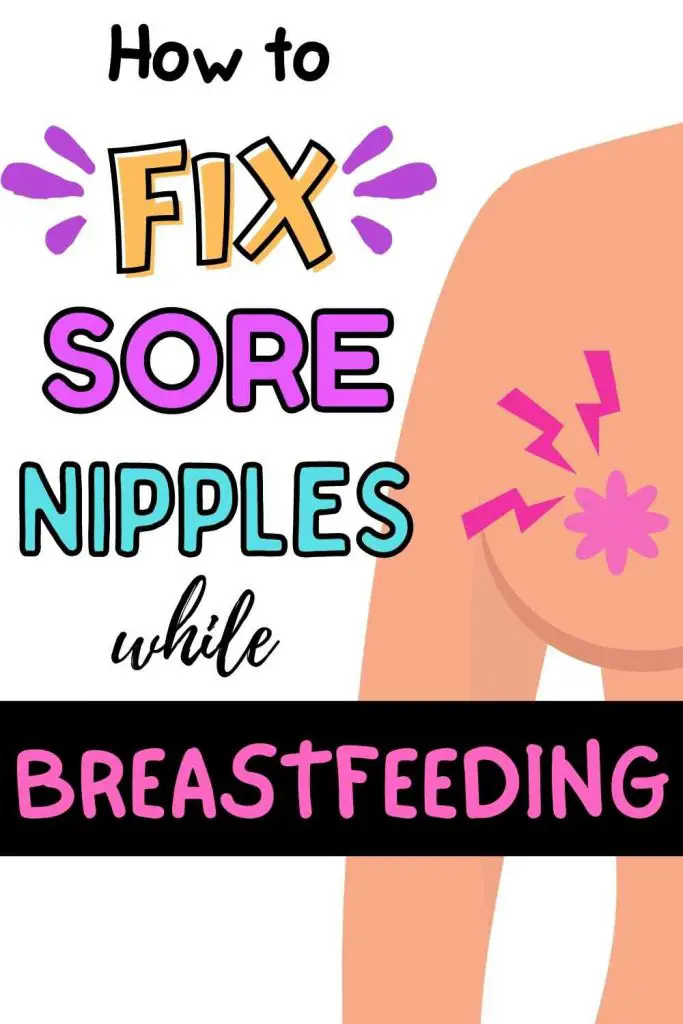
14) Be Patient
One of the last piece of advice is to be patient. I know it’s very sore, hard and frustrating when you are in so much pain and trying to figure out this breastfeeding thing. I even remember feeling like such a failure.
But remember that, in all of this, your baby is also still trying to figure it all out. Breastfeeding doesn’t come so natural to them either as we are led to believe: it takes time and practice. So, try give them that.
If a breastfeeding sessions becomes too much too handle, have someone with you that can help you out and take the baby for a little bit. Take a breath and pat yourself on the shoulder: you are doing a great job and you got this mama.
15) It’s Okay to Let Go
Last but not least, a tip I learnt from when our first daughter was just a few days old. My wife was the one that gave birth to her and, even though she tried very hard to breastfeed, it didn’t work out in the end, and my daughter was fomula fed from the very beginning.
This was quite a hard time for both my wife and I: coming to terms with the fact that she couldn’t breastfeed like we had always imagined was almost like a grieving process that took a few days / weeks to overcome. But that and the following experience bottle feeding my daughter also opened my eyes to the fact that it’s totally okay to bottle feed your baby (whether using formula or expressed milk, read our article on combination feeding). You’ll still be okay, your baby is still going to be okay, beautiful and healthy, and everything else is going to be okay.
So, while it’s good to persist and soldier on knowing that the pain can eventually go and you will enjoy breastfeeding, also know that it’s okay to let go if you can’t or don’t want to deal with it anymore. I strongly believe that your baby and the whole family will be much happier if you can be happier, and that can’t happen when you are in constant excruciating pain, and nothing that you do or try seems to help.
Final Thoughts
Here it is mom, all my tips for dealing with sore nipples while breastfeeding 🙂 I really believe that there’s at least one tip here that will definitely help you with the pain.
Breastfeeding, particularly for the first time, can be a such a bitch. But with lots of patience and perseverance (and help!) I truly believe you can get to the other side and you will soon discover the magic of breastfeeding. And, if not, know that you didn’t fail at anything and you are still an amazing mom!!
Finally, one final word of advice is that if the nipple pain continues beyond one or two weeks, or the nipple is cracked, bleeding, scabbed, blistered, or excessively painful, make sure to seek the advice of an Lactation Consultant or health care provider! I have mentioned this before, but the last thing you want to avoid is an infection, which can lead to thrush or mastitis.
If you have only recently given birth, also make sure to check out these posts of mine:
- Signs of Postpartum Anxiety and Tips on How to Deal with it
- Postpartum Care Kit Checklist (with all Essentials!)
- What to REALLY expect with your Postpartum Recovery
- Best Postpartum Pads (for Bleeding & a Quick Recovery!)
- 6 Tips For First Time Moms (Practical Advice To Help New Moms Adjust)
- How to Survive the First 3 Months with a Newborn
If you are struggling with your milk supply:
